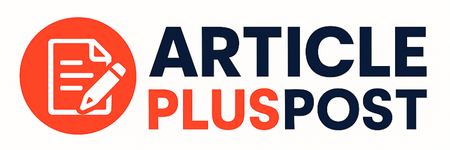How Quality Management Tools Transform Contact Center Customer Service
Category: Technology | Author: allandermot | Published: October 20, 2025
In the bustling, high-stakes environment of a modern contact center, every customer interaction is a moment of truth. It\'s an opportunity to build loyalty, resolve issues, and reinforce brand values. Yet, maintaining consistently high standards across hundreds, or even thousands, of daily conversations is a monumental challenge. This is where robust quality monitoring in contact centers steps in, and more specifically, where advanced Quality Management Tools for call centers become indispensable allies in elevating customer service.
The Imperative for Quality Monitoring
Without effective quality monitoring, contact centers often grapple with a host of issues: inconsistent service delivery, missed training opportunities, frustrated agents, and ultimately, dissatisfied customers. In today\'s competitive landscape, a single poor experience can lead to customer churn and significant reputational damage.
Traditional quality assurance relied heavily on manual spot-checks, which were often inconsistent, time-consuming, and provided only a narrow glimpse into agent performance. This piecemeal approach simply can\'t keep pace with the volume and complexity of modern customer interactions.
What are Quality Management Tools for Call Centers?
A Quality Management Tool for call center is a sophisticated software solution designed to streamline, automate, and enhance the process of evaluating agent performance and customer interactions. These tools move far beyond simple call recording, offering a comprehensive suite of features that provide unprecedented insights and actionable data.
Key functionalities typically include:
- Omnichannel Interaction Recording: Capturing calls, emails, chats, and social media interactions.
- Customizable Scoring Forms: Allowing evaluators to objectively score interactions based on predefined criteria (e.g., adherence to script, empathy, active listening, problem resolution).
- Agent Performance Dashboards: Providing a centralized view of individual and team performance metrics.
- Reporting and Analytics: Generating detailed reports on trends, root causes of issues, and areas for improvement.
- Workflow Automation: Assigning evaluations, tracking feedback cycles, and managing coaching activities.
How QA Tools Elevate Customer Service
The integration of advanced QA in customer service through these powerful tools transforms contact center operations in several profound ways, directly leading to better customer experiences.
- Ensuring Consistency and Standardization: One of the primary benefits is the ability to enforce consistent service delivery. By evaluating interactions against a uniform set of criteria, QA tools help ensure that every agent adheres to brand guidelines, compliance regulations, and best practices. This consistency builds customer trust and reduces frustration caused by varied service levels.
- Targeted Training and Coaching: No two agents are exactly alike, and neither are their development needs. QA tools provide granular data that helps identify specific skill gaps for each agent. Instead of generic training, supervisors can use insights from evaluations to deliver highly targeted coaching sessions. For example, if an agent consistently struggles with active listening, specific examples from their calls can be used to demonstrate improvement areas, making coaching more effective and personalized. This focused approach accelerates agent development and improves their ability to handle diverse customer scenarios.
- Improved Agent Performance and Morale: When agents receive clear, objective feedback, they understand expectations better and are more motivated to improve. QA tools foster a culture of continuous learning and development. Recognition for good performance, identified through consistent high scores, boosts morale. Conversely, constructive criticism, backed by specific examples from recordings, helps agents grow without feeling unfairly judged. Empowered and well-trained agents are more confident, resilient, and better equipped to provide exceptional service, leading to higher job satisfaction and reduced agent churn.
- Enhanced Customer Satisfaction and Loyalty: Ultimately, the goal of quality monitoring contact center efforts is to delight customers. By addressing inconsistencies, improving agent skills, and identifying systemic issues, QA tools directly contribute to higher first-call resolution rates, shorter resolution times, and more empathetic interactions. Customers feel heard, understood, and valued, leading to increased satisfaction, stronger loyalty, and positive brand perception. The data gathered can also reveal common customer pain points, allowing the organization to proactively address them.
- Data-Driven Decision Making and Process Improvement: Beyond individual agent performance, Quality Management Tools for call centers provide invaluable macro-level insights. Trend analysis can uncover why certain products generate more complaints, identify bottlenecks in processes, or highlight successful strategies that can be replicated. This data empowers contact center managers and executive leadership to make informed decisions about training programs, script optimization, product development, and overall operational efficiency. It shifts the focus from reactive problem-solving to proactive strategic improvement.
The Future of QA in Customer Service
The evolution of these tools continues, with features like speech analytics and sentiment analysis that automatically flag interactions based on keywords, emotion, or customer satisfaction indicators. This takes QA in customer service to an even higher level, allowing for the analysis of vast volumes of interactions in real-time, identifying critical trends and opportunities that might otherwise be missed.
Conclusion
In an era where customer experience is a key differentiator, investing in robust Quality Management Tools for call centers is no longer a luxury, but a strategic imperative. By providing the means for comprehensive quality monitoring in contact centers, these tools empower organizations to move beyond reactive problem-solving to proactive excellence. They transform every interaction into an opportunity for growth, ensuring that your contact center is not just a cost center, but a powerful engine for customer loyalty and business success.
